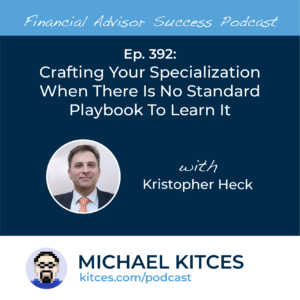Over the past few decades, technological advances and plummeting transaction costs have facilitated the emergence of a dizzying variety of ways to gain exposure to very specific areas of the market. As a result, advicers have more options than ever to add value for their clients by tailoring investment portfolios that are specific to their unique needs, goals, and risk tolerance. One approach that has become increasingly popular is the use of factor-based ETFs, which are designed around certain shared characteristics of assets that go beyond the more traditional attributes (e.g., size, industry, location) of early mutual funds. While there are literally hundreds of identifiable factors, the most well-known are Quality, Value, Momentum, Small Size, and Minimum Volatility.
In this guest post, Robert Hum, a Managing Director and U.S. Head of Factor ETFs at Blackrock, discusses why Quality factor ETFs have seen large inflows over the last year, the characteristics that define Quality, and how advicers can implement Quality ETFs in their clients' portfolios.
As we head towards the second half of 2024, investors continue to grapple with many of the same issues that have influenced the overall market action for the past several quarters. While inflationary pressures have continued to trend lower and the jobs market seems to have tightened somewhat, the Federal Reserve remains in a wait-and-see mode in regard to any potential rate cuts, international tensions remain elevated, and the level of concentration in a handful of (arguably overvalued) stocks persists.
As a result, this macroeconomic and market uncertainty has ostensibly driven a preference for overweighting higher-quality companies in investment portfolios. Specifically, 'high-quality' companies share several similar fundamental characteristics. For instance, research has shown that companies whose revenue is driven by their core business functions (versus temporary accounting transactions) tend to have more sustainable earnings and higher future stock returns. Leverage also comes into play, as firms with lower debt-to-equity ratios are less risky, particularly in high-interest-rate climates. Moreover, companies that are more profitable (as measured by their return on equity) tend to outperform their less-profitable peers, even after accounting for the higher price multiples they often carry… and that relative outperformance has tended to increase with longer holding periods!
With those factors (no pun intended!) in mind, there are 3 primary ways that advicers can use Quality ETFs in portfolios. First is from a tactical perspective, where quality strategies that focus on companies with lower debt-to-equity ratios have lower total interest expenses and may be better positioned to weather the current higher-for-longer rate regime. Second, advicers can use Quality ETFs strategically. Quality ETFs tend to have a lower 'tracking error' in comparison to other factor-based products and, therefore, can be used as a large-cap blended fund. Finally, Quality ETFs can be an effective diversifier, particularly in portfolios that are tilted toward the Value factor.
Although Quality ETFs have already shown solid relative performance year-to-date, the longer-term case for Quality may still be compelling, given persistently high interest rates and the ongoing macroeconomic headwinds. Advicers can add value for clients who may be concerned about a possible economic slowdown by maintaining their overall portfolio mix consistent with a strategic focus on an area that tends to show relative strength during downturns. Ultimately, by offering clients strategies to respond to changes in the economic cycle, advicers can help clients stay disciplined and focused on their long-term goals!




